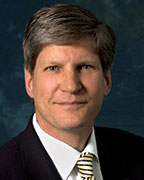
Confidence
ASTM International's Commitment to Excellence
Confidence is defined as the "belief or assurance in … the ability of someone or something to act in a proper, trustworthy or reliable manner." That could very well define how many governments, businesses and organizations around the world perceive ASTM standards. And with good reason.
For example, there are regulators all over the world who use ASTM standards not just because they are the best in their class, but also because those standards will not subject their governments to trade disputes. That is because ASTM International operates under World Trade Organization TBT1 principles for the development of international standards. In other words, because of the way they are developed, it is very unlikely that ASTM standards will create unnecessary barriers to trade. Many WTO member governments are so confident of the truth of this that they use ASTM standards in technical regulations with amazing regularity.
In 1994, the launch of the ASTM International website initiated a steady stream of sophisticated electronic tools - electronic versions of standards for ballot item preparation, committee agendas, minutes, balloting, a digital library, online collaboration and others too numerous to list here. That investment made the development of standards faster, more convenient and more accessible than ever before.
That same technology also increased the number of international technical experts who could develop standards in real time, and ASTM International standards are more universal now, more global in content and applicability, than ever before. Fifty percent of all sales of ASTM standards are outside the United States. More engineers, more lawmakers, more exporters and more consumers can count on the ASTM standard to deliver the world's best technology to their door. Most important, our international members know that the system that has included them will produce standards that are relevant to them.
We've learned from our research that more than half of the members participating in ASTM International's technical committees are employed in enterprises with 250 or fewer employees, i.e., small- and medium-sized businesses. For these companies, every decision and every investment in an employee's time is crucial. The number of SMEs represented within ASTM's ranks is an endorsement of their trust, a vote of confidence in a system and a product that has served them well.
In 2004, ASTM International's board of directors decided to fund the Interlaboratory Study Program, an initiative to help technical committees enhance the quality of ASTM test methods. Collaborating with volunteer laboratories, the ASTM ILS Program is equipped to identify potential samples, collect and analyze data, and produce a draft precision statement, among other things. At present, the ILS Program is working with more than 300 active studies, with 294 studies balloted and approved for inclusion in their corresponding ASTM test methods. Eighty different ASTM committees have registered precision studies in the ILS Program.
And, to leave no stone unturned, ASTM International's Proficiency Testing Program provides companies and their laboratories with a statistical quality assurance tool that enables them to compare, improve and maintain a high level of performance with other laboratories worldwide. Programs include the use of ASTM test methods for plastics, biofuels, metals, textiles and many others. At present, there are 50 different programs that use over 450 ASTM test methods. Fifty-one percent of the laboratories in the program are outside the United States, and overall, more than 4,300 units of participation in over 80 countries participate in the program each year.
We can be proud of our record. From ensuring that the ASTM International standard is the epitome of integrity in world markets, to the efficiency and modernity of the development process, to its diversity and inclusiveness, to the validation of test methods and laboratory practices, ASTM International is, and has always been, committed to excellence, the wellspring from which confidence flows.
Reference
1. The World Trade Organization Technical Barriers to Trade Agreement.
James A. Thomas
President, ASTM International
 SN Home
SN Home Archive
Archive Advertisers
Advertisers Masthead
Masthead RateCard
RateCard Subscribe
Subscribe Email Editor
Email Editor